#SmartphoneComparison
Explore tagged Tumblr posts
Text

📱 iPhone 15 vs Samsung S24 – Which flagship wins in 2025? Full review on performance, camera, battery & more!
iPhone15 #SamsungS24 #iPhone15vsSamsungS24 #AppleVsSamsung #SmartphoneComparison #Tech2025 #FlagshipPhones #iOSvsAndroid #MobileReview #TechBlog
#iPhone15#SamsungS24#iPhone15vsSamsungS24#AppleVsSamsung#SmartphoneComparison#Tech2025#FlagshipPhones#iOSvsAndroid#MobileReview#TechBlog
0 notes
Link
#AIphotographysmartphones#Androidflagshipphones#AndroidvsiPhone2025#bestphonedisplays#bestphoneforphotography2025#bestsmartphones2025#flagshipsmartphones#GalaxyS25Edgefeatures#high-endsmartphones#macrophotographysmartphone#mobileHDRvideorecording#mobileinnovation2025#newsmartphones2025#NothingPhone3a#NothingPhonemidrange#premiumAndroidphones#SamsungGalaxyS25Edge#SamsungvsSonyphones#smartphonebatterylife2025#smartphonecameratechnology#smartphonecomparison#smartphonetechtrends#SonyXperiaflagship#topflagshipphones#ultrathinsmartphone#Xperia1VII#Xperia1VIIcamerareview
0 notes
Text
POCO C75 5G vs Samsung Galaxy A55 5G: Feature, Price, and Specification Comparison
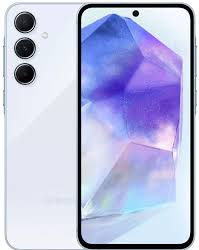

The smartphone market is buzzing with new launches, and the two mid-range contenders that make the cut are POCO C75 5G and Samsung Galaxy A55 5G. While the former two boast powerful specs, both devices serve the user slightly differently. We will try to compare and contrast their features, price, and specs to help you decide better.
Design and Build Quality
The POCO C75 5G and Samsung Galaxy A55 5G have different approaches when it comes to design.
POCO C75 5G: The latest smartphone from POCO boasts a modern and stylish design with a polycarbonate body, prioritizing strength and lightness. The large display is combined with minimal bezels for visual appeal in budget-friendly devices.

Samsung Galaxy A55 5G: The case for Samsung is that it has retained the premium design language. The Galaxy A55 5G comes with glass protection and an aluminum frame that makes it feel even more premium. It's robust in hand and aesthetically more polished than the POCO C75 5G.

Comparison of Displays
Display plays a major role when a decision has to be taken in terms of selecting a smartphone, especially for multimedia.
POCO C75 5G: The screen is 6.74-inches IPS LCD with a 90Hz refresh rate, meaning the phone scrolls quite smoothly, with fairly good visuals. IPS may not render deep blacks and vibrant colors like the AMOLED screens, however.
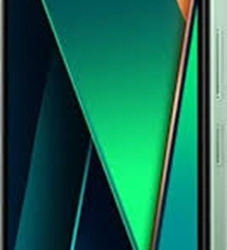
Samsung Galaxy A55 5G: It has the same edge, but Samsung edges out on its 6.6-inch Super AMOLED screen at 120Hz refresh rate. AMOLED guarantees punchy colours, great brightness and contrast that even binge-watching and game freaks love to have.
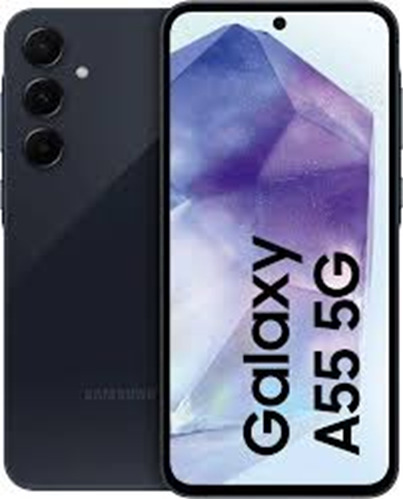
Performance and Processor
This is where both the phones stand far away from each other in performance due to its processor.
POCO C75 5G: This is a new device that comes with the powerful MediaTek Dimensity 6100+ processor. As such, it will be apt for handling everyday tasks. While it can support multitasking, casual gaming, and light usage, it does not perform smoothly under heavier workloads or graphics-intensive games.
Samsung Galaxy A55 5G: Samsung has placed the Exynos 1480 processor, which offers better performance in multitasking and games. The Galaxy A55 5G is faster and much more capable of handling heavy applications and games without lag.
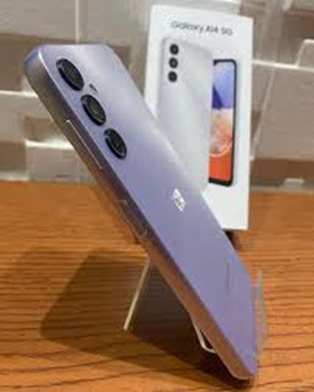
For pure power seekers, Samsung leads in terms of performance.
Camera Features
The cameras are often what people choose a mid-range smartphone for, and both handsets bring something to the table.
POCO C75 5G comes with a 50MP primary sensor which includes AI enhancements. While it can click pretty good shots in the daytime, it may fail during low-light conditions. The front camera is pretty okay for selfies and video calls but doesn't have much more than that.
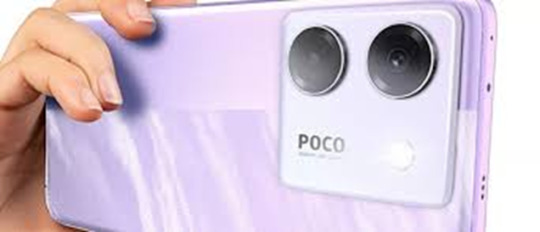
Samsung Galaxy A55 5G: Samsung leads the way with its 50MP triple-camera setup, ultra-wide, and macro lens. It excels in photography with superior image processing from Samsung, giving vibrant and detailed images even in challenging lighting conditions. Its 32 MP front camera further enhances the selfie experience.
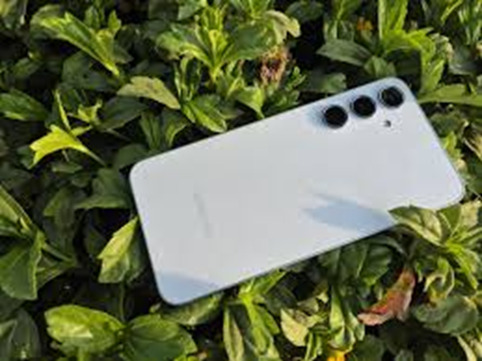
Battery and Charging
Battery life is critical, especially for users on the go.
POCO C75 5G: It is equipped with a strong 5000mAh battery, backed by 18W fast charging. That will ensure you get through an entire day without any fuss.

Samsung Galaxy A55 5G: The phone has a 5000mAh battery but supports 25W fast charging, which gives it a slight edge in the speed of recharging.

Software and User Interface
POCO C75 5G: It is running MIUI based on Android 13, so the interface can be customized. However, it may come with preinstalled apps and ads, which some users might find really annoying.
Samsung Galaxy A55 5G: Samsung promises a clean software experience with One UI 6.0 running on Android 14. One UI is smoother and more intuitive, and gets better long-term software support.
Price Comparison

The biggest differentiator for budget and mid-range devices is usually pricing.
POCO C75 5G: This device is more affordable and caters to budget-conscious consumers. With its competitive pricing, this is a great option for users looking for 5G connectivity at an entry-level price point.
Samsung Galaxy A55 5G: Samsung's offering is costlier due to premium build, better display, and more advanced features. It may be costlier, but in terms of performance and camera quality, it does give a great value for money.
Which One Should You Buy?

The decision between the POCO C75 5G and Samsung Galaxy A55 5G depends on your needs and budget:
The POCO C75 5G is a decent 5G smartphone if you're looking for a budget option that offers decent performance, decent battery life, and good value for money.
However, if you want a smartphone with premium design, display, cameras, and better performance, then Samsung Galaxy A55 5G can be a good choice even with the higher investment.
For detailed analysis about the gadgets, you can also check this Poco C75 5G vs Samsung Galaxy A55 5G: Which Phone is Better?
0 notes
Text
#Honor300Ultra#Honor300Pro#SmartphoneComparison#TechReview#MobileTechnology#GadgetComparison#HonorSmartphones#TechBattle#Smartphone#Features#honor#300ultravs300pro#vs#compare#comparison
0 notes
Text
Moto G85 5G vs OnePlus Nord CE 4 Lite 5G: A Detailed Comparison
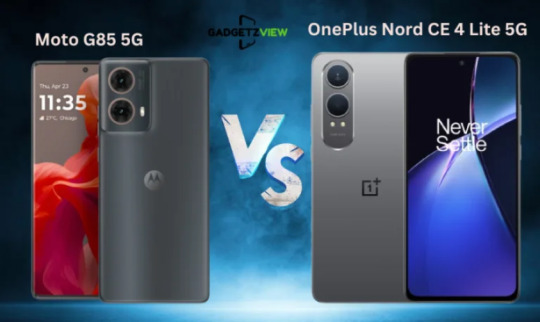
Both the Moto G85 5G and the OnePlus Nord CE 4 Lite 5G bring impressive features to the mid-range smartphone market, offering fast 5G connectivity, vibrant displays, and reliable performance. Let's take a closer look at how they compare across various categories:
Design and Build
Moto G85 5G has a slim and light build at 172g, with dimensions of 73.06 x 161.91 x 7.59 mm. It offers colors like Cobalt Blue and Olive Green with vegan leather options.
OnePlus Nord CE 4 Lite 5G is slightly bulkier at 191g and 75.6 x 162.9 x 8.1 mm, with colors like Ultra Orange, Super Silver, and Mega Blue.
Display
Both devices feature a 6.67-inch display with a 120Hz refresh rate and 1080 x 2400 pixels resolution, offering a similar pOLED (Moto) and AMOLED (OnePlus) display type. The Moto G85 5G has Corning Gorilla Glass 5 for protection, while the OnePlus Nord CE 4 Lite uses Corning Gorilla Glass.
Performance and Memory
Both smartphones come with 8GB of RAM and 128GB of internal storage, which is expandable via a Hybrid SIM slot in the OnePlus Nord CE 4 Lite 5G (up to 2TB), whereas the Moto G85 5G lacks expandable storage.
The Moto G85 5G is powered by the Snapdragon 6s Gen3, while the OnePlus Nord CE 4 Lite 5G uses the Snapdragon 695 chipset. Both processors offer good performance for day-to-day tasks, but the Snapdragon 695 is a more established choice.
Camera Setup
The Moto G85 5G sports a dual rear camera system: 50MP (Wide) and 8MP (Ultra-Wide), alongside a 32MP front camera.
The OnePlus Nord CE 4 Lite 5G features a 50MP (Wide) and 2MP (Macro) rear camera setup, with a 16MP front camera.
Battery and Charging
Moto G85 5G features a 5000mAh battery with 33W TurboPower charging and reverse charging.
OnePlus Nord CE 4 Lite 5G offers a 5500mAh battery with a faster 80W charging speed but lacks reverse charging capabilities.
Connectivity
Both smartphones support 5G, Wi-Fi 5, Bluetooth 5.1, and have a USB-C port for charging and data transfer. The Moto G85 5G offers IP52 splash resistance, while the OnePlus Nord CE 4 Lite 5G is slightly more resistant with an IP55 rating.
Software and Features
The Moto G85 5G runs on Android 14 with My UX and features a fingerprint sensor in the display and Face Unlock.
The OnePlus Nord CE 4 Lite 5G also runs on Android 14, but with OxygenOS 14.0 for a smoother, bloat-free experience.
Verdict
Moto G85 5G is ideal for users seeking a solid battery life and a reliable performance experience at a lower price point. Its 5000mAh battery and reverse charging are significant highlights.
The OnePlus Nord CE 4 Lite 5G shines in terms of design and software optimization, with 80W charging and a more robust IP55 rating. It's a great choice for users prioritizing fast charging and a smooth software experience.
gadgetzview.com
#MotoG855G#OnePlusNordCE4Lite5G#5GSmartphones#SmartphoneComparison#MidRangeSmartphones#MotoVsOnePlus#TechReview#PerformanceComparison#BatteryLifeTest#CameraQuality#DisplayPerformance#ValueForMoney#AndroidSmartphones#MobileTechBattle#BestBudgetPhone
0 notes
Text

Samsung Galaxy S23 5G vs Samsung Galaxy S23 FE 5G: Which One Should You Choose?
The Samsung Galaxy S23 5G and Galaxy S23 FE 5G are two popular smartphones in India priced under Rs 50,000. While the S23 series is Samsung's flagship line, the S24 series is the latest. During this festive season, both the S23 and S23 FE are attracting attention due to big discounts. The Galaxy S23 5G is priced around Rs 39,999, while the S23 FE starts at Rs 29,999, making it a more budget-friendly option.
Price Comparison
Galaxy S23 5G: Starts at Rs 39,999 (8GB RAM, 128GB storage)
Galaxy S23 FE 5G: Starts at Rs 29,999 (8GB RAM, 128GB storage)
Design
Both phones have a similar flat design. The S23 5G has a stronger aluminum frame with Gorilla Glass Victus 2, while the S23 FE uses Gorilla Glass 5. Both are IP68 rated, meaning they are water and dust resistant. The S23 is lighter (168g), while the S23 FE weighs 209g.
Performance
The Galaxy S23 5G uses the powerful Snapdragon 8 Gen 2 processor, while the S23 FE has the Exynos 2200 chip. Both run on Android 14 and promise three years of updates.
Cameras
Both models have a triple-camera setup. The S23 5G features a 50MP main camera, while the S23 FE also has a 50MP main sensor. The S23 FE has a wider ultra-wide lens, but the S23 has a better telephoto lens.
Battery
The Galaxy S23 5G has a 3,900mAh battery with 25W fast charging, while the S23 FE has a larger 4,500mAh battery, also with 25W charging.
Conclusion
Both phones offer great features. The Galaxy S23 5G is for those who want top performance and camera quality. The Galaxy S23 FE is a good choice for budget-conscious buyers, with good performance and battery life.
#SamsungS23 #SamsungS23FE #SmartphoneComparison #FlagshipPhones #SamsungIndia #TechReview #BudgetSmartphones #GalaxySSeries #SmartphoneBattle
#SamsungS23#SamsungS23FE#SmartphoneComparison#FlagshipPhones#SamsungIndia#TechReview#BudgetSmartphones#GalaxySSeries#SmartphoneBattle
0 notes
Text

Battle of Giants: iPhone 16 Pro vs. Samsung Galaxy S24 Ultra
https://rb.gy/9d9pdz
Join us for Regular Update:
👉 Whatsapp: https://rb.gy/jqelh6
👉 Quora: https://rb.gy/p8nq9
👉 Telegram: https://rb.gy/0cc12
👉 Medium: https://medium.com/@akashkoringa
#iphone16pro #samsunggalaxys24ultra #iphonevssamsung #iphone16provsgalaxys24ultra #smartphonecomparison #battleofgiants #applevsamsung #flagshipphones2024 #iphonetechnology #galaxys24features #bestflagshipphones #androidvsios #cameraqualitycomparison #performancebattle #batterycomparison #smartphoneinnovation #iphone16proreview #galaxys24ultrareview #mobilephotographybattle #smartphonedesign #displaycomparison #aiinsmartphones #smartphonecamerabattle #flagshipphonewar #whichphoneisbetter
#iphone16pro#samsunggalaxys24ultra#iphonevssamsung#iphone16provsgalaxys24ultra#smartphonecomparison#battleofgiants#applevsamsung#flagshipphones2024#iphonetechnology#galaxys24features#bestflagshipphones#androidvsios#cameraqualitycomparison#performancebattle#batterycomparison#smartphoneinnovation#iphone16proreview#galaxys24ultrareview#mobilephotographybattle#smartphonedesign#displaycomparison#aiinsmartphones#smartphonecamerabattle#flagshipphonewar#whichphoneisbetter
0 notes
Link
With the recent launch of the Motorola Edge 50 Ultra in India, smartphone enthusiasts now have a new contender vying for the title of best "flagship killer." The Edge 50 Ultra boasts the Qualcomm Snapdragon 8s Gen 3 chipset, the same powerful processor found in two other recently released phones: the Xiaomi 14 CIVI and Poco F6 5G. But how does the Motorola Edge 50 Ultra stack up against these other Snapdragon 8s Gen 3-powered devices? Let's delve into a detailed comparison to help you decide which phone reigns supreme. Motorola Edge 50 Ultra vs Xiaomi 14 CIVI Design and Build Quality The Motorola Edge 50 Ultra exudes a luxurious feel with its option of a vegan leather or wooden back panel. This is complemented by a sturdy aluminum frame and Gorilla Glass Victus protection on the front for enhanced scratch resistance. The phone also boasts an IP68 rating, signifying its ability to withstand dust and water immersion. While slightly heavier (197 grams) and thicker (8.6mm) compared to the competition, the Edge 50 Ultra feels very solid in hand. The Xiaomi 14 CIVI offers a choice between a vegan leather or a smooth AG glass back, encased in an aluminum frame. It settles for splash resistance and utilizes the more recent Gorilla Glass Victus 2 for screen protection. The Xiaomi 14 CIVI achieves a lighter weight (up to 179.3 grams) and a slimmer profile (up to 7.8mm) depending on the chosen variant. The Poco F6 5G takes a more budget-friendly approach with a plastic back and frame. Despite the use of Gorilla Glass Victus on the front, the overall build quality feels less substantial compared to the other two phones. The Poco F6 5G maintains a mid-range weight (179 grams) and thickness (8mm). In terms of design aesthetics, the Xiaomi 14 CIVI strikes a good balance with its "floating quad-curved display" that offers a blend of form and functionality. The Motorola Edge 50 Ultra arguably has the most premium look, while the Poco F6 5G's design is fairly standard. For users prioritizing durability and a luxurious feel, the Motorola Edge 50 Ultra takes the crown. However, if a lighter and more compact phone is your preference, the Xiaomi 14 CIVI might be a better choice. Display and Battery Life All three phones boast high-refresh-rate displays, with the Motorola Edge 50 Ultra leading the pack with a smooth 144Hz refresh rate. The Xiaomi 14 CIVI and Poco F6 5G settle for a still-impressive 120Hz refresh rate. However, both the Poco F6 5G and Xiaomi 14 CIVI boast support for Dolby Vision and HDR10+, while the Edge 50 Ultra is limited to HDR10+. The Xiaomi 14 CIVI edges out the competition with the highest peak brightness (3,000 nits). On paper, the display quality appears very similar across all three devices. However, real-world testing would be necessary to determine any noticeable differences in user experience. When it comes to battery life, the Poco F6 5G boasts the largest battery capacity at 5,000 mAh. The Xiaomi 14 CIVI follows closely with a 4,700 mAh battery, while the Motorola Edge 50 Ultra features the smallest battery at 4,500 mAh. Despite the smaller battery size, the Edge 50 Ultra redeems itself with the fastest charging technology (125W wired charging) out of the three phones. It also offers the convenience of both wireless charging (50W) and reverse wireless charging. For users who prioritize extended battery life on a single charge, the Poco F6 5G might be the ideal choice. However, if faster charging speeds and wireless charging capabilities are important to you, the Motorola Edge 50 Ultra might be more suitable. Performance and Software Unsurprisingly, all three phones are powered by the same powerhouse chipset - the Qualcomm Snapdragon 8s Gen 3. This translates to similar levels of top-notch performance for all three devices, making them capable of handling even the most demanding tasks with ease. When it comes to software, the Motorola Edge 50 Ultra boasts a near-stock Android 14 experience with its own Hello UI on top. This offers a clean and bloatware-free interface for users who prefer a more stock Android experience. Both the Xiaomi 14 CIVI and Poco F6 5G run on Android 14 with their custom HyperOS skin. FAQs: Q: Which phone has the longest battery life? A: The Poco F6 5G boasts the largest battery capacity, offering the potential for longer battery life on a single charge. Q: Which phone is the fastest charger? A: The Motorola Edge 50 Ultra boasts the fastest wired charging technology (125W) and offers the additional convenience of wireless and reverse wireless charging. Q: Is the Poco F6 5G good for gaming? A: Yes, the Poco F6 5G is a great choice for gamers on a budget. It packs the same powerful Snapdragon 8s Gen 3 chipset as the other two phones, offering excellent performance for mobile games. Q: Is the Motorola Edge 50 Ultra worth the price? A: The Motorola Edge 50 Ultra offers a premium design, the most durable build quality, the fastest charging speeds, and a large main camera sensor with a powerful zoom lens. However, it also comes with the highest price tag. Whether it's worth the price depends on how much value you place on these features.
#batterylife#cameraphone#flagshipkiller#HighRefreshRateDisplay#MotorolaEdge50Ultra#MotorolaEdge50UltravsXiaomi14CIVI#PocoF65G#smartphonecomparison#Snapdragon8sGen3#stockAndroid#wirelesscharging#Xiaomi14Civi
0 notes
Text
Vivo Y12a vs Vivo Y12s: A Comprehensive Comparison
In the ever-evolving world of smartphones, Vivo has established itself as a reliable brand that consistently delivers high-quality devices. Among its popular models are the Vivo Y12a and Vivo Y12s. These two smartphones are closely related but come with differences that cater to varying user preferences and needs. In this blog, we’ll dive deep into a detailed comparison of the Vivo Y12a and Vivo Y12s, examining their design, display, performance, battery life, camera quality, and more to help you make an informed decision.
1. Design and Build Quality
Both the Vivo Y12a and Vivo Y12s boast sleek designs that are characteristic of modern smartphones. They feature a plastic back with a glossy finish, providing a premium look without the hefty price tag.
Vivo Y12a: Available in Phantom Black and Glacier Blue, the Y12a measures 164.41 x 76.32 x 8.41 mm and weighs 191 grams. Its ergonomic design ensures a comfortable grip, making it easy to handle for prolonged periods.
Vivo Y12s: Slightly older, the Y12s comes in Phantom Black and Glacier Blue as well, with dimensions of 164.41 x 76.32 x 8.41 mm and a weight of 191 grams. It mirrors the Y12a in terms of size and weight, maintaining a consistent feel across both models.
2. Display
The display quality is a crucial aspect of any smartphone, affecting how users interact with their device on a daily basis.
Vivo Y12a: The Y12a features a 6.51-inch IPS LCD with a resolution of 720 x 1600 pixels. The screen-to-body ratio is approximately 81.6%, offering a decent viewing experience with vibrant colors and good brightness levels.
Vivo Y12s: Similarly, the Y12s sports a 6.51-inch IPS LCD with the same resolution of 720 x 1600 pixels. It also shares the same screen-to-body ratio of around 81.6%. Both phones provide identical display specifications, ensuring a consistent visual experience.
3. Performance
Performance is a critical factor, especially for users who multitask or engage in gaming and other resource-intensive activities.
Vivo Y12a: Under the hood, the Y12a is powered by the Qualcomm Snapdragon 439 chipset, coupled with 3GB of RAM. This combination ensures smooth performance for everyday tasks, though it might struggle with high-end gaming and intensive multitasking.
Vivo Y12s: In contrast, the Y12s is equipped with the MediaTek Helio P35 processor. It comes in two variants: one with 3GB of RAM and another with 4GB of RAM. The Helio P35 offers a slight edge over the Snapdragon 439 in terms of performance, especially in the 4GB RAM variant, providing a more seamless experience for users who demand a bit more from their device.
4. Operating System
The operating system can greatly influence the user experience, offering different levels of support, features, and updates.
Vivo Y12a: The Y12a runs on Funtouch OS 11 based on Android 11. This OS version brings new features such as improved privacy settings, chat bubbles, and enhanced performance optimizations.
Vivo Y12s: Initially released with Funtouch OS 11 based on Android 10, the Y12s can be upgraded to Android 11. The difference in the pre-installed OS might not be significant for all users, but the ability to update ensures both phones can leverage the latest Android features.
5. Battery Life
Battery life is a major consideration for users who rely on their phones throughout the day without frequent charging.
Vivo Y12a: The Y12a houses a substantial 5000mAh battery, which is more than capable of providing a full day of use on a single charge. It supports 10W charging, which, while not the fastest, ensures reliable battery replenishment.
Vivo Y12s: Matching the Y12a, the Y12s also features a 5000mAh battery. It supports 10W charging as well, offering a similar level of endurance. Both models are well-suited for users who prioritize long battery life.
6. Camera Quality
For many users, camera performance is a key factor when choosing a smartphone.
Vivo Y12a: The Y12a is equipped with a dual-camera setup, featuring a 13MP primary sensor and a 2MP depth sensor. This combination allows for decent photography, with the depth sensor enabling effective portrait shots. The front camera is an 8MP sensor, suitable for selfies and video calls.
Vivo Y12s: The Y12s shares the same camera setup as the Y12a, with a 13MP primary sensor and a 2MP depth sensor on the rear, and an 8MP front-facing camera. This ensures that users of either model can enjoy similar photographic capabilities.
7. Connectivity and Other Features
Connectivity options and additional features can enhance the overall usability of a smartphone.
Vivo Y12a: The Y12a supports Bluetooth 4.2, dual-band Wi-Fi, and has a microUSB 2.0 port for charging and data transfer. It also features a side-mounted fingerprint sensor for quick and secure unlocking.
Vivo Y12s: The Y12s stands out with Bluetooth 5.0, offering better range and faster data transfer compared to the Y12a. It supports dual-band Wi-Fi and also uses a microUSB 2.0 port. Like the Y12a, it includes a side-mounted fingerprint sensor.
8. Price and Availability
Price is often a deciding factor for many consumers, especially in the budget and mid-range segments.
Vivo Y12a: Typically priced slightly lower than the Y12s, the Y12a is a great option for users looking for a budget-friendly smartphone without compromising too much on features.
Vivo Y12s: The Y12s, being available in both 3GB and 4GB RAM variants, offers more flexibility in pricing. The 4GB variant might be priced higher but provides better performance, making it a worthy consideration for users willing to spend a bit more.
9. Conclusion
Both the Vivo Y12a and Vivo Y12s are commendable options in the budget smartphone category. They share many similarities, including design, display, battery life, and camera capabilities. However, the differences in processor, Bluetooth version, and RAM options might influence your decision based on your specific needs.
Choose Vivo Y12a if: You are looking for a cost-effective option with decent performance for everyday use and prefer Qualcomm processors.
Choose Vivo Y12s if: You want a slightly better performance, especially if opting for the 4GB RAM variant, and value the advantages of Bluetooth 5.0.
Ultimately, both devices offer great value for money, and your choice will depend on your specific requirements and budget. Whether you prioritize performance, connectivity, or price, Vivo has ensured that both the Y12a and Y12s cater to a wide range of users.
#VivoY12a#VivoY12s#VivoSmartphones#SmartphoneComparison#TechReview#BudgetPhones#AndroidPhones#MobileTech#PhoneSpecs#TechComparison#GadgetReview#PhoneReview#Snapdragon439#HelioP35#Android11#Android10#BatteryLife#PhoneCameras#TechBlog#SmartphoneGuide#TechTrends#MobileReview#BestBudgetPhones#VivoYSeries#PhoneFeatures#TechUpdates#MobileGadgets#SmartphonePerformance#TechCommunity#PhoneComparison
0 notes
Text
Samsung Galaxy S24 Ultra vs iPhone 15 Pro Max
https://www.mobiblip.com/samsung-galaxy-s24-ultra-vs-iphone-15-pro-max/

#TechBattle#PhoneShowdown#SamsungVsApple#FlagshipFaceoff#MobileWars#GadgetGeek#S24Ultra#iPhone15ProMax#SmartphoneComparison#TechTrends#MobileMasters#CameraClash#FeatureFrenzy#PerformanceShowcase#GadgetGurus#InnovationInsider#DesignDebate#TechTalk#DigitalDuel#FlagshipFridays
0 notes
Text
#iPhone15#SamsungS24#iPhone15vsSamsungS24#AppleVsSamsung#SmartphoneComparison#Tech2025#FlagshipPhones#iOSvsAndroid#MobileReview#TechBlog
0 notes
Text
S24 Ultra From Samsung: Price, Details, Comparisons
#SamsungS24Ultra#S24UltraPrice#SamsungDetails#SmartphoneComparison#TechSpecs#MobileTech#GadgetNews#FlagshipDevice#S24UltraFeatures#MobileTechReview
0 notes
Text
Is the Samsung Galaxy A21 Worth the Extra Cost Over the Samsung Galaxy A20?

Choosing a smartphone that fits your needs and budget can be challenging, especially when faced with various options from a trusted manufacturer like Samsung. Two budget-friendly options, the Samsung Galaxy A21 and the Samsung Galaxy A20, offer compelling features at different prices. In this in-depth analysis, we will explore the key differences between these two smartphones and determine whether the Samsung Galaxy A21 justifies its higher cost over the Samsung Galaxy A20.
Design and Build Quality
The design of a smartphone is often a crucial factor in the decision-making process. The Samsung Galaxy A21 and A20 exhibit some differences in design, but whether these variations justify the price difference is subjective.
The Samsung Galaxy A21 boasts a more modern design with a sleek and slightly curved plastic back panel that mimics the glass look. It features a quad-camera setup in a square module on the rear, which gives it a contemporary feel—the front houses a hole-punch cutout for the selfie camera, resulting in a larger display-to-body ratio.
On the other hand, the Samsung Galaxy A20 features a more traditional design with a glossy plastic back panel. It has a dual-camera setup arranged vertically on the rear and a teardrop notch on the front for the selfie camera. While it may not be as cutting-edge in design as the A21, it still offers a clean and functional look.
Whether the design of the A21 justifies its higher cost depends on personal preferences. Some users may appreciate the A21's more modern aesthetics, while others may find the A20's design perfectly acceptable for its price range.
Display
The display is another critical aspect to consider when comparing these two smartphones. The Samsung Galaxy A21 and A20 offer large, immersive screens, but there are differences in resolution and technology.
The Samsung Galaxy A21 features a 6.5-inch HD+ Infinity-O display with a 720 x 1600 pixels resolution. While this resolution might not be as sharp as Full HD, it still provides vibrant colors and quality. The Infinity-O design refers to the hole-punch cutout for the front camera, which allows for more screen real estate.
In contrast, the Samsung Galaxy A20 has a 6.4-inch HD+ Super AMOLED display. Super AMOLED technology delivers deep blacks and vibrant colors, creating a visually pleasing experience. The resolution is also 720 x 1560 pixels, similar to that of the A21.
The A20 has an advantage in display technology with its Super AMOLED panel, which offers richer colors and better contrast than the A21's standard LCD screen. However, the A21 compensates with its slightly larger display and the hole-punch design, which some users may prefer.
Performance
Performance is crucial in determining whether the Samsung Galaxy A21 is worth the extra cost over the Samsung Galaxy A20. Let's delve into the hardware specifications and real-world performance of these devices.
The Samsung Galaxy A21 has a MediaTek Helio P35 chipset, an octa-core processor at 2.3 GHz. It comes with 3GB of RAM and 32GB of internal storage, which can be expanded using a microSD card.
On the other hand, the Samsung Galaxy A20 features a Samsung Exynos 7884 chipset, also an octa-core processor but clocked at 1.6 GHz. It comes with 3GB of RAM and 32GB of internal storage, expandable via a microSD card slot.
Regarding raw specifications, the Galaxy A21 has a slightly more powerful processor with a higher clock speed. However, various factors can influence real-world performance, including software optimization.
Both phones run on Samsung's One UI, a customized Android version. While the Galaxy A21 has a newer version of One UI (One UI 2.0) compared to the A20 (One UI 1.1), the difference in day-to-day performance may be insignificant.
Both phones adequately perform everyday tasks like browsing the web, using social media apps, and watching videos. However, suppose you're looking for a device that can handle more intensive tasks, such as gaming or multitasking, with multiple apps running simultaneously. In that case, the Galaxy A21's slightly more powerful chipset might offer a slightly better experience.
Camera
A smartphone's camera capabilities are often a deciding factor for many buyers. The Samsung Galaxy A21 and A20 have distinct camera setups, and it's important to consider how they perform relative to their price points.
The Samsung Galaxy A21 features a quad-camera setup on the rear:
Main Camera: 16 MP, f/1.8 Ultra-wide Camera: 8 MP, f/2.2 Macro Camera: 2 MP, f/2.4 Depth Sensor: 2 MP, f/2.4 In contrast, the Samsung Galaxy A20 comes with a dual-camera setup on the rear:
Main Camera: 13 MP, f/1.9 Depth Sensor: 5 MP, f/2.2 Here are some considerations when comparing the camera performance:
Main Camera: The A21 has a higher megapixel count on its main camera, which can result in sharper and more detailed photos in good lighting conditions. The wider aperture (lower f-number) on the A21 also aids in low-light photography.
Ultra-wide Camera: The A21's ultra-wide camera provides versatility for capturing wide-angle shots, landscapes, and group photos. The A20 lacks this feature, which can limit its photography capabilities.
Macro Camera: The A21 includes a dedicated macro camera for close-up shots of small objects, allowing for unique and detailed photography. The A20 does not have a dedicated macro camera.
Depth Sensor: Both phones have depth sensors for portrait mode and background blur effects. The A20's depth sensor has a higher resolution, which may result in slightly better portrait mode performance.
Front Camera: The A21 also excels in the front camera department with a 13 MP sensor compared to the A20's 8 MP front camera. The wider aperture on the A21 further enhances its low-light selfie performance.
Regarding camera capabilities, the Samsung Galaxy A21 offers a more comprehensive and versatile setup than the A20. If photography is a priority for you, the A21's camera system justifies the extra cost.
Battery Life
Battery life is critical for many users, as a longer-lasting battery can provide a more reliable and convenient experience. Both the Samsung Galaxy A21 and A20 feature respectable battery capacities.
The A21 is equipped with a 4,000mAh battery, which should provide a full day of use on a single charge for most users, especially with the power-efficient MediaTek Helio P35 processor and the HD+ display.
The A20, the other hand, comes with a slightly smaller 4,000mAh battery. While the capacity is the same as the A21, the A20 has a Super AMOLED display known for its power efficiency. As a result, the A20's battery life is generally good and can last a full day with regular use.
Both phones support 15W fast charging, which allows for quicker replenishment of the battery when needed. However, neither device supports wireless charging.
The difference between the two phones is minimal battery life, and both offer reliable performance for daily use. The A20's Super AMOLED display helps offset any potential power consumption differences caused by the processor.
Software and Updates
The software experience on a smartphone is an often-overlooked aspect that can significantly affect overall user satisfaction. The Samsung Galaxy A21 and A20 run on Samsung's One UI, a customized version of Android.
The Galaxy A21 ships with One UI 2.0, based on Android 10. It provides a user-friendly interface with features like Dark Mode, Digital Wellbeing, and Samsung's customizations.
The Galaxy A20, on the other hand, comes with an earlier version of One UI (One UI 1.1) based on Android 9. While it may lack some of the newer features introduced in One UI 2.0, it still offers a smooth and functional user experience.
When considering software, it's essential to remember that software updates are crucial. Manufacturers typically provide software updates to address security vulnerabilities and improve system performance. The Samsung Galaxy A21, being the newer device, is likely to receive updates for a more extended period compared to the A20. This can be an important consideration for long-term use and security.
Price and Value
The actual price difference is one of the most significant factors in determining whether the Samsung Galaxy A21 is worth the extra cost over the Samsung Galaxy A20. Prices can vary based on region, promotions, and availability, so it's essential to check the current pricing in your area.
As of the time of writing, the Samsung Galaxy A21 is generally priced higher than the A20, reflecting its more modern design, slightly more powerful processor, additional camera features, and updated software. Whether the extra cost is worth depends on your priorities and budget.
If you value a more contemporary design, a versatile camera system, and the potential for longer software support, the Galaxy A21 justifies its higher price. However, if you're looking for a budget-friendly device with good overall performance and doesn't require the latest design or camera features, the Galaxy A20 remains a reasonable choice.
In conclusion, whether the Samsung Galaxy A21 is worth the extra cost over the Samsung Galaxy A20 depends on your specific needs and priorities.
The Galaxy A21 offers several advantages, including a more modern design, a slightly more powerful processor, a versatile camera system, and the potential for longer software support. If these features align with your preferences and budget, the A21 is a solid choice.
However, the Galaxy A20 still provides good value for its price, featuring a Super AMOLED display for richer colors, respectable performance for everyday tasks, and a reliable battery life. If you are budget-conscious and don't require the latest design or advanced camera features, the A20 remains a viable option.
Ultimately, the decision should be based on your requirements, and it's advisable to consider factors like design, camera capabilities, software support, and pricing when choosing between the Samsung Galaxy A21 and A20.
0 notes
Text
youtube
In this epic battle of the Honor X40 GT versus the Honor X40 GT Racing, we bring you an ultimate showdown between two flagship smartphones that will leave you in awe! Prepare to witness a clash of power, performance, and cutting-edge technology.
The Honor X40 GT boasts an unrivaled blend of sleek design and sophisticated features. With its powerful processor and top-notch camera capabilities, this device takes your smartphone experience to a whole new level. Stay captivated by its stunning display, immerse yourself in crystal-clear visuals, and enjoy every swipe, tap, and scroll with seamless ease.
On the other hand, the Honor X40 GT Racing takes things up a notch by catering specifically to the needs of avid gamers. Designed with gaming enthusiasts in mind, this smartphone offers lightning-fast performance, zero lags, and an optimized gaming experience. The seamless graphics and enhanced audio will transport you into a world where every gaming session feels like an adventure.
Both models share common features such as long-lasting battery life, impressive storage capacities, and exceptional connectivity options. Whether you prioritize impeccable photography or intense gaming, these smartphones have got you covered. Choose the Honor X40 GT for an all-round flagship experience, or opt for the Honor X40 GT Racing for an ultimate gaming extravaganza.
So, which flagship smartphone will take the crown? Which one reigns supreme? With the Honor X40 GT and the Honor X40 GT Racing, the choice is yours to make. Whether you're a photography enthusiast, a gaming aficionado, or simply seeking a powerful smartphone companion, these devices will exceed your expectations.
Join us as we delve into the world of mobile supremacy with the Honor X40 GT and the Honor X40 GT Racing. Brace yourself for a battle filled with extraordinary features, jaw-dropping performance, and an unrivaled experience that will leave you spellbound!
#HonorX40GT#HonorX40GTRacing#FlagshipSmartphone#Comparison#TechReview#Versus#TopPerforming#Supreme#Performance#Camera#Display#BatteryLife#SpeedTest#Gaming#Design#Innovation#Features#Specs#MobilePhotography#SmartphoneComparison#Youtube
1 note
·
View note
Text
Poco X6 5G vs Vivo V30e 5G: A Mid-Range Smartphone Showdown

The mid-range smartphone market has heated up with the introduction of the Poco X6 5G and Vivo V30e 5G, two devices promising exceptional performance and value for money. Let’s dive deep into their features and specifications to determine which suits your needs better.
Design and Build
Poco X6 5G: Sleek and lightweight at 187g, it features a premium design with a bezel-less AMOLED display and Corning Gorilla Glass Victus for added protection.
Vivo V30e 5G: Slightly heavier at 188g, it has a robust build and comes with a higher IP64 rating for better dust and water resistance.
Verdict: The Poco X6 offers slightly better durability with Gorilla Glass Victus, while the Vivo V30e edges out in environmental resistance.
Display
Poco X6 5G: 6.67-inch AMOLED display with 1220 x 2712 pixels resolution, offering a sharper 446 PPI and vibrant colors.
Vivo V30e 5G: 6.78-inch AMOLED screen with a lower 1080 x 2400 resolution but boasts a higher screen-to-body ratio of 93.3%.
Verdict: If pixel density is your priority, the Poco X6 is the better pick. For a more immersive screen experience, the Vivo V30e wins.
Performance and Software
Poco X6 5G: Powered by Qualcomm Snapdragon 7s Gen 2 with a 2.4 GHz Octa-Core processor, paired with MIUI 14 on Android 13.
Vivo V30e 5G: Runs on Qualcomm Snapdragon 6 Gen 1, a slightly less powerful chipset with 2.2 GHz speed, supported by FuntouchOS 14 on Android 14.
Verdict: The Poco X6 outperforms in processing power, but the Vivo V30e offers a more updated Android experience.
Camera Capabilities
Poco X6 5G: Triple rear cameras (64 MP + 8 MP ultra-wide + 2 MP macro) and a 16 MP front camera.
Vivo V30e 5G: Dual rear cameras (50 MP + 8 MP depth sensor) and a superior 50 MP front camera.
Verdict: For selfie enthusiasts, the Vivo V30e excels with its high-resolution front camera. However, the Poco X6 offers better versatility with its ultra-wide and macro lenses.
Battery and Charging
Poco X6 5G: 5100mAh battery with 67W fast charging.
Vivo V30e 5G: A larger 5500mAh battery with slower 44W charging.
Verdict: The Vivo V30e lasts longer, but the Poco X6 charges significantly faster.
Unique Features
Poco X6 5G: Includes an IR Blaster and a 3.5mm headphone jack.
Vivo V30e 5G: Offers NFC and a hybrid SIM slot for expandable storage.
Verdict: Choose the Poco X6 for utility features like the IR Blaster or the Vivo V30e for NFC compatibility.
Conclusion
Both devices have their strengths:
Choose the Poco X6 5G for better performance, versatile cameras, and faster charging.
Opt for the Vivo V30e 5G if selfies, battery life, and sleek design are your priorities.
Ultimately, your decision boils down to personal preferences and how you plan to use the smartphone.
gadgetzview.com
#PocoX65G#VivoV30e5G#MidRangeSmartphones#5GSmartphones#SmartphoneComparison#TechShowdown#PocoVsVivo#BudgetPhones2024#PerformanceBattle#CameraFeatures#DisplayTechnology#BatteryPerformance#AndroidPhones#ValueForMoney#MobileTechnology
0 notes
Text
The iPhone vs. Samsung debate continues to dominate the smartphone world. In 2025, both brands are pushing boundaries with AI, sustainable designs, and cutting-edge features. Whether you’re an iOS loyalist or an Android enthusiast, this guide breaks down the key differences to help you choose.BodyDesign and BuildiPhone: Sleek, premium designs with a focus on iOS integration. The iPhone 16 series boasts a Space Black titanium finish and sustainable materials. Samsung: Offers variety, from foldable Galaxy Z Fold 7 to budget-friendly models. Known for vibrant AMOLED displays and durable builds. PerformanceiPhone: Powered by the latest A-series chips, offering unmatched speed and efficiency for gaming and multitasking.Samsung: Exynos and Snapdragon processors provide robust performance, especially in foldable phones with AI-driven features. CameraiPhone: Renowned for consistent, high-quality imaging with advanced computational photography.Samsung: Excels in low-light photography and zoom capabilities, especially in high-end models like the Galaxy S25 Edge. Ecosystem and SoftwareiPhone: Seamless integration with Apple Watch, AirPods, and macOS. iOS is smooth but less customizable. Samsung: Works with Android and Galaxy wearables like the Galaxy Ring. Offers more customization and cross-device compatibility. Price and ValueiPhone: Premium pricing, starting at $799 for base models.Samsung: Wider price range, with cost-effective options like the Galaxy A series and high-end foldables. Conclusion
Choosing between iPhone and Samsung depends on623 your priorities. iPhone is ideal for ecosystem lovers and simplicity, while Samsung offers flexibility and innovation, especially in foldables. Which side are you on? Share your thoughts!Caption for Social Media
🍎 vs 📱 The ultimate showdown: iPhone or Samsung in 2025? Compare design, performance, cameras, and more to find your perfect smartphone!
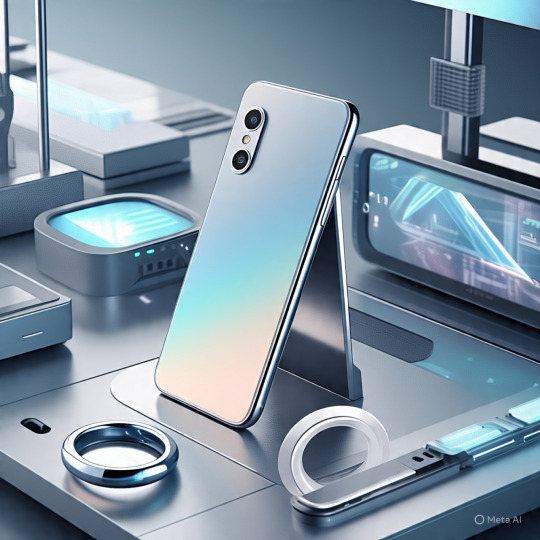
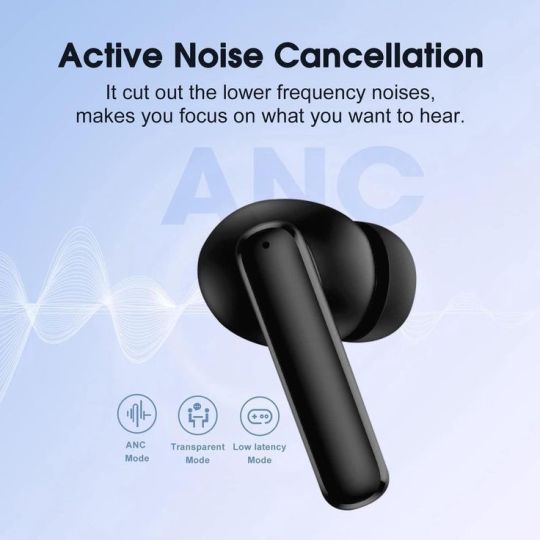


0 notes